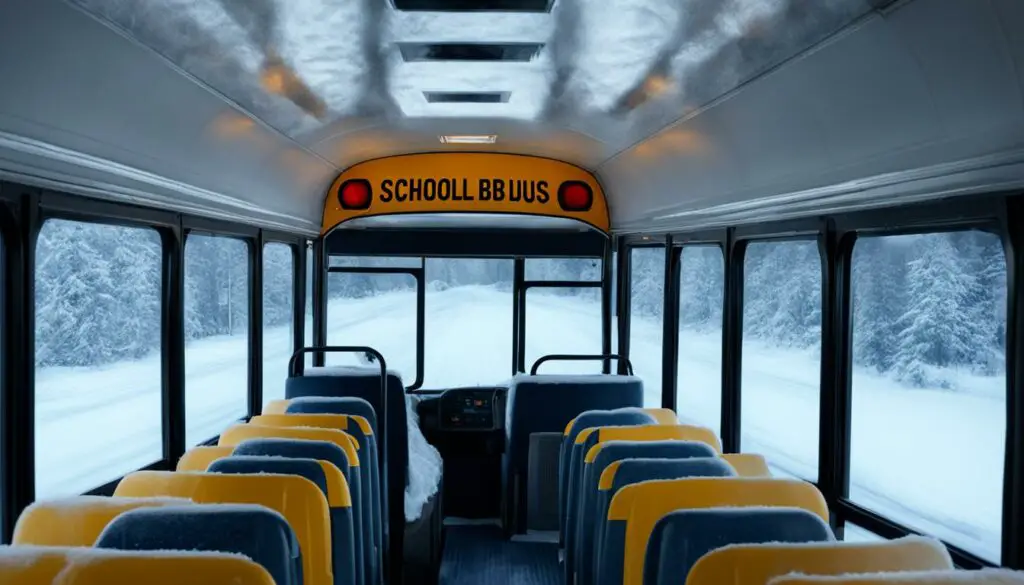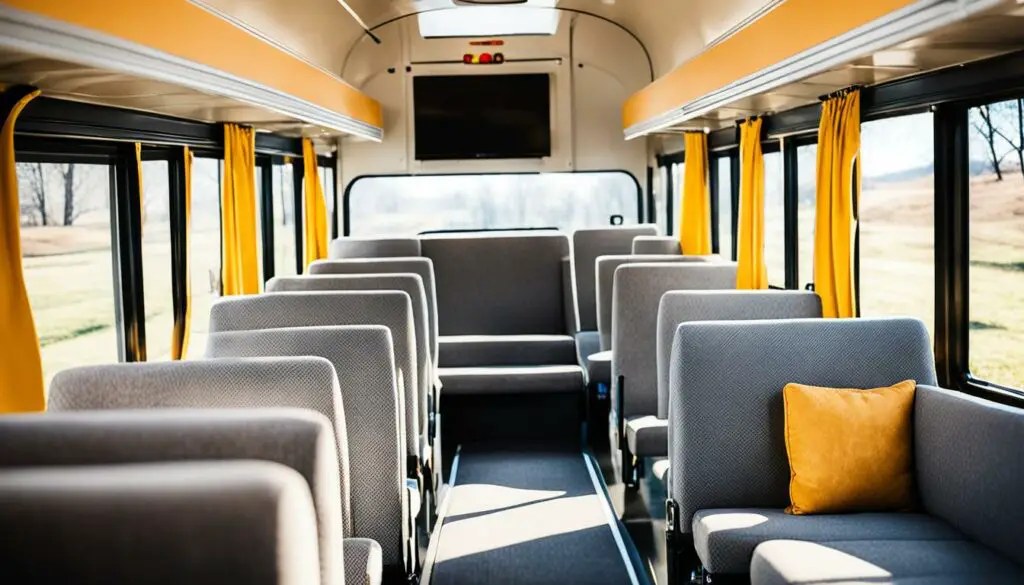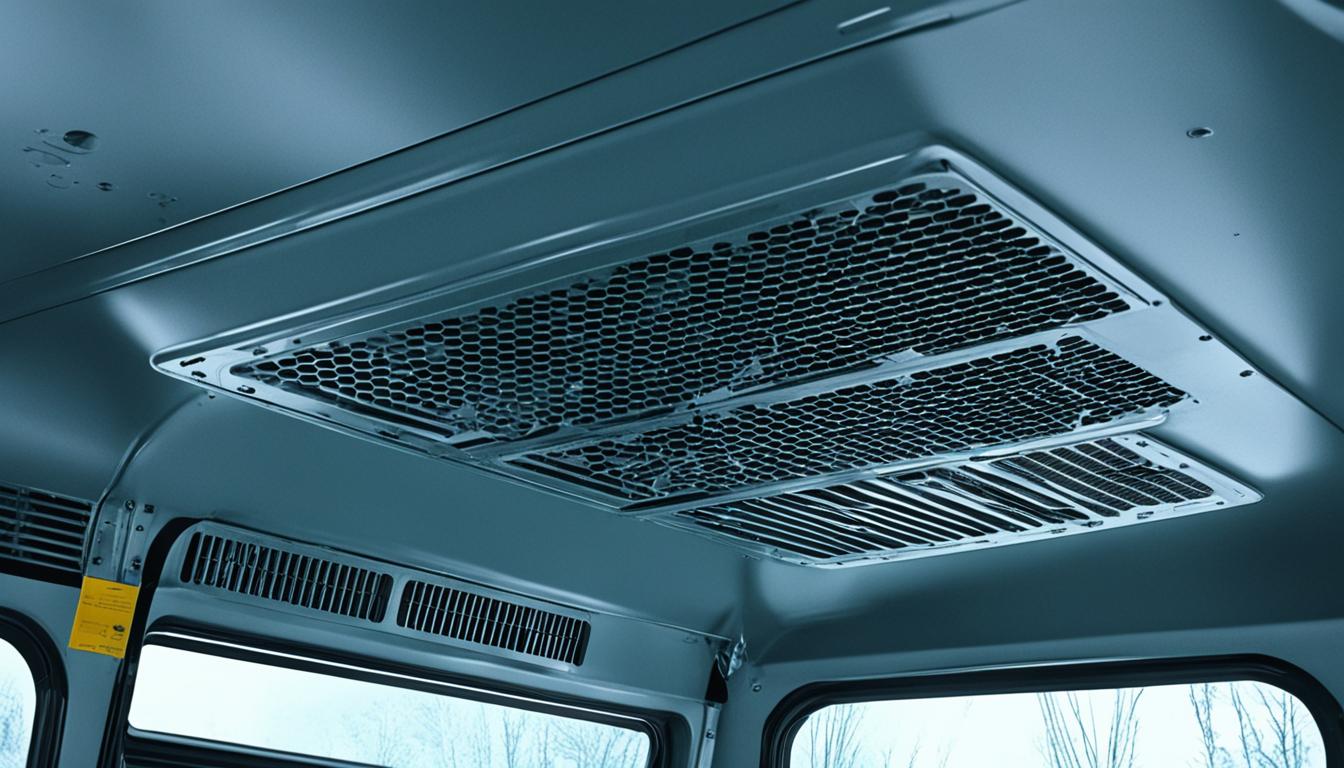Do School Buses Have Heat? Comfort in Transit
Regarding school buses, one may wonder if these vehicles are equipped with heating systems to ensure a comfortable journey for passengers. After all, school bus rides can be long, especially during winter, and it’s only natural to desire warmth in transit.
So, do school buses have heat? Let’s explore the ins and outs of school bus heating systems, climate control, and the measures taken to provide a cozy environment for students and drivers alike.
The Thomas Built Buses Heated Driver’s Seat
Thomas Built Buses, a leading manufacturer of school buses in North America, understands the importance of bus driver comfort. To enhance the overall driving experience, Thomas Built Buses now offers an optional heated driver’s seat designed specifically for the driver.
The heated driver’s seat provides dual zone heating for the lower back and seat areas, ensuring maximum warmth and relaxation during long drives or cold mornings. With a built-in thermostat offering two heat settings, drivers can adjust the temperature according to their preferences.
The advanced heating system utilizes two carbon fiber heating strips, enabling fast and even heat distribution throughout the seat. This ensures drivers experience consistent warmth and a comfortable driving environment, regardless of external weather conditions.
By incorporating this innovative feature, Thomas Built Buses demonstrates its commitment to prioritizing the well-being and comfort of school bus drivers. The optional heated driver’s seat is a testament to the brand’s dedication to providing an optimal driving experience for those responsible for safely transporting students to and from school.

| Features | Benefits |
|---|---|
| Dual-zone heating | Provides warmth for the lower back and seat areas |
| Built-in thermostat with two heat settings | Allows drivers to customize their level of warmth |
| Carbon fiber heating strips | Ensures fast and even heat distribution |
Insulation and Temperature Control in School Buses
School buses are equipped with insulation to regulate temperature and provide a comfortable environment for passengers. The insulation used in school buses is similar to the batt-type insulation found in home walls. While it offers some level of temperature control, it may not be designed to withstand extreme weather conditions.
It is important to note that school bus heating systems are designed to maintain a comfortable temperature inside the bus, especially during colder weather. The temperature is typically kept warmer than the outside but not as warm as a typical indoor environment.
However, the effectiveness of insulation and temperature control may vary depending on the specific bus model and its maintenance. Bus operators must ensure the insulation is well-maintained and the heating systems are regularly serviced to provide optimal temperature control and weather protection.

🌟 Hey Students! 🚀 Ready for the ultimate experience? Join us on Studentsinside.com's Facebook, YouTube, WhatsApp, and LinkedIn. Click now for tips, fun, and success vibes! 🌈✨ #StudentLife #JoinUs
While insulation plays a significant role in maintaining temperature, it may not be sufficient for prolonged exposure to extreme temperatures. Therefore, passengers should dress appropriately for the weather, especially during colder months. Layering clothing and bringing additional blankets or clothing layers can help regulate body temperature and provide extra warmth if needed.
Considerations for Comfortable Travel in School Buses
School buses are primarily designed for short trips, providing a convenient mode of transportation for students to and from school. Passenger comfort and temperature regulation are essential in school bus design to ensure an enjoyable travel experience.
While school buses are equipped with heating systems to provide warmth during colder weather, they may not have the same level of insulation as other structures, such as houses or recreational vehicles (RVs).
The goal is to maintain a temperature inside the bus that is warmer than the outside temperature during cold weather and cooler than the outside temperature during hot weather.
When determining the level of temperature control needed, it is essential to consider the bus’s intended use.
School buses are not typically equipped with advanced climate control systems like those found in cars or buildings, but they have heating systems to provide a certain level of comfort. The temperature inside the bus can be adjusted to create a comfortable environment for passengers.
However, it’s important to note that the comfort level may vary across different buses due to maintenance schedules and ongoing maintenance processes.
The maintenance facility is responsible for preparing the buses for the summer heat or winter cold, which includes refreshing the coolant, checking and replacing belts if necessary, and inspecting sensors, cabling, and fans.
Temperature Regulation Tips for Comfortable Travel in School Buses
- Dress appropriately for the weather, especially during colder months. Layering clothing can help regulate body temperature and provide additional warmth if needed.
- Bring blankets or extra clothing layers for added comfort.
- Consider individual preferences by having personal fans or portable heaters. These can be useful in regulating the temperature to suit personal comfort levels.
- Take breaks to warm up or cool down, especially during long journeys.

Tips for Comfortable Travel in School Buses
First and foremost, it’s essential to dress appropriately for the weather. During colder months, layering your clothing can help regulate your body temperature and provide additional warmth. This way, you can stay comfortable throughout the ride, regardless of the outside conditions.
Another helpful tip is to bring blankets or extra layers of clothing. These can be a great source of comfort and provide an additional barrier against chilly temperatures.
Additionally, consider having personal fans or portable heaters on hand. While school buses typically have built-in heating systems, their effectiveness may vary. Having your own devices can ensure you can adjust the climate to your personal comfort preferences.
Lastly, it’s crucial to consider the duration of your journey and plan accordingly. If you’re embarking on a long trip, take breaks to warm up or cool down as necessary. This way, you can avoid discomfort and maintain a pleasant travel experience.
FAQ
Q: Do school buses have heating systems?
A: Yes, school buses are typically equipped with heating systems to comfort passengers during colder weather.
Q: How do school bus heating systems work?
A: School buses’ temperature control differs from cars and small vans. The system must be set one way or the other, similar to older apartment buildings. The maintenance facility is responsible for preparing the buses for the summer heat or winter cold, which includes refreshing the coolant, checking and replacing belts, and inspecting sensors, cabling, and fans.
Q: What maintenance processes are involved in maintaining the heating system in school buses?
A: The maintenance facility is responsible for refreshing the coolant, checking and replacing belts if necessary, and inspecting sensors, cabling, and fans to ensure the proper functioning of the heating system in school buses.
Q: Can the comfort level in school buses vary?
A: Yes, the comfort level may vary across different buses due to maintenance schedules and ongoing maintenance processes.
Q: Does Thomas Built Buses offer any special comfort features for school bus drivers?
A: Yes, Thomas Built Buses, a leading manufacturer of school buses in North America, offers an optional heated driver’s seat. The heated seat provides dual zone heating for the lower back and seat areas, with a built-in thermostat offering two heat settings. It enhances driver comfort, especially during cold mornings or after a long work day.
Q: What are some key features of the Thomas Built Buses heated driver’s seat?
A: The heated driver’s seat from Thomas Built Buses delivers fast and even heat distribution through two carbon fiber heating strips. It provides dual zone heating for the lower back and seat areas, with a built-in thermostat offering two heat settings.
Q: How does insulation help with temperature regulation in school buses?
A: School buses are typically equipped with insulation to help regulate temperature. The insulation is usually similar to the batt-type insulation used in home walls. While it provides some level of temperature control, it may not be sufficient for long periods in extreme temperatures.
Q: Are school buses equipped with advanced climate control systems?
A: No, school buses are not typically equipped with advanced climate control systems like those found in cars or buildings. However, they have heating systems to provide a certain level of comfort.
Q: What should passengers consider for a more comfortable travel experience in school buses?
A: Passengers should dress appropriately for the weather, bring blankets or extra clothing layers, and consider personal fans or portable heaters for individual comfort preferences. Planning breaks to warm up or cool down during long journeys is also essential.
Q: Can school buses provide the same level of temperature control as houses or RVs?
A: School buses are primarily designed for short trips and may not have the same level of insulation found in other structures like houses or RVs. The goal is to maintain a temperature warmer than the outside temperature during cold weather and cooler than the outside temperature during hot weather.








